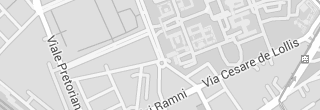TECHNOLOGY DESCRIPTION
1. Light-controlled devices for drug release
The system consists of a biocompatible film or patch containing a dispersion of gold nanoparticles, which act like light transducers, producing heat upon light stimulation, and of thermosensitive nanosponges, which serve as a reservoir for the drug molecules to be released. The temperature rise generated by the nanoparticles triggers a contraction in proximal nanosponges, thus promoting the expulsion of the drug to the external environment in a very controllable and localized way. The patches can be applied either on the skin or inside the body with high levels of safety and comfort. In practice, the technology relates to a release device comprising: A) a porous polymeric matrix (made e.g. of chitosan), allowing the passage of a chemical species to be delivered; B) a plurality of nanometric particles (e.g. gold nanorods) dispersed in said matrix, apt to be excited when are invested by a light flux to generate heat; C) a plurality of thermosensitive structures (nanosponges, like e.g. aggregates of amphiphilic molecules), containing the chemical species to be delivered.
2. Nanovectors to target hypoxic cells for diagnostics and therapy of tumors
We have developed a platform of PEGylated gold nanorods with optical absorption (longitudinal plasmonic band) around 800 nm, good biological profiles, stability and efficiency of photothermal conversion. These nanoparticles are modified with specific probes for selective targeting of malignant cells, in order to be administered systemically to patients for imaging and photothermal ablation of cancer. In details, the invention relates to the formulation of nanostructured hybrid material, i.e. gold nanoparticles, conjugated to inhibitors of carbonic anhydrases 9 and 12 (CAIX and CAXII), which are expressed by hypoxic cells such as those found in the core of solid tumors. These modified nanoparticles, when selectively linked to hypoxic tumor cells, can be used as contrast agent in imaging techniques such as photo-acoustic imaging and can be also used as therapeutic agent, to induce hyperthermia or drug release when activated by laser light.
BENEFITS
Matrix and device and use thereof for optically-controlled release of chemicals:
This approach allows a controlled, localized and repeatable administration of a chemical species, by exploiting the thermosensitivity of the structures of amphiphilic molecules used as reservoir, without requesting a direct heating of the application area or however an invasive or potentially dangerous procedure.
Assembly comprising an absorber of near infrared (NIR) light covalently linked to an inhibitor of carbonic anhydrase:
this approach is based on the targeting of the hypoxic micro-environment of cancer cells, rather then on the targeting of receptors expressed by cancer cells, which may significantly vary depending on the different types of tumors and on the various stages of development of the tumor.
LIMITATIONS
Limitations to be explored.
APPLICATIONS
Matrix and device and use thereof for optically-controlled release of chemicals:
The use of these devices may assist in performing advanced and personalized pharmacological therapies, in which the release of precise drug amounts to specific body regions is required. The chemical species to be released can be a drug or in general any substance to be administered for therapeutic, diagnostic and/or cosmetic use. In a possible realization form, the device can shaped like a film or a patch and applied on the surface of the skin or under the skin. Illumination to induce drug release can be provided e.g. by a low power LED source, shaped like a pen.
Assembly comprising an absorber of near infrared (NIR) light covalently linked to an inhibitor of carbonic anhydrase:
These nanoparticles are administered systemically in the body to reach the hypoxic core of a solid tumor, and then activated by laser radiation to achieve minimally invasive cancer therapies, such as laser hyperthermia or intracellular release of pre-loaded anti-cancer drugs.
MATERIALS
Readiness Level (TRL)
 Patent Grading Report |
Patent Grading ReportThe Grading Patents Report evaluates and grades US patents Sample Buy from Wisdomain |
AVAILABILITY
Available for
Licensing, Assignment and research Collaboration
INVENTOR / TEAM
Roberto Pini et al.






